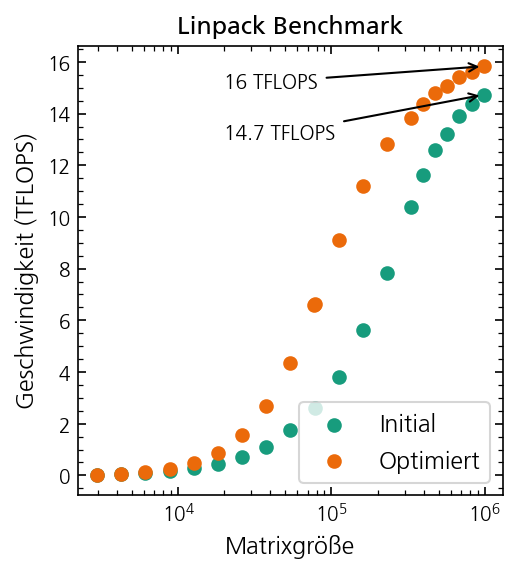New computing power for scientific simulations at Fraunhofer INT
Simulation calculations are becoming an increasingly important part of scientific work. They can be used for a variety of tasks, from planning an experiment to data analysis. Numerical experiments can also be carried out that would be impossible in the laboratory.
To implement a new cluster for scientific simulation calculations, four new computing nodes were procured from funds of the BMVg investment program. These were integrated into the new computing cluster together with an existing first node. It will cover the demand for computing power for scientific simulation calculations in the next few years. The application areas are mainly simulations of the transport and interaction of radiation with matter and calculations of the propagation of electromagnetic fields. The existing 50 processor cores and 1.3 TB of main memory could now be supplemented by a further 320 cores and 8 TB of main memory with the new nodes. After initial commissioning and integration into the institute‘s IT infrastructure, the configuration and software of the computing nodes were optimized to achieve the highest possible computing performance.
In the end, the four new nodes in the cluster achieved a performance of 16 trillion floating point operations per second (FLOPS) in the Linpack Benchmark, about 7 times as much as with the first computing node. The Linpack Benchmark is used, among other things, to compare the world‘s most powerful computers. Until 2002, Fraunhofer INT‘s new cluster would have been the fastest supercomputer in the world in this Benchmark, a computing power that is still sufficient for the tasks at Fraunhofer INT today. In the course of the optimization process, it was also possible to gain many useful insights into the way in which future simulations can be performed with the highest possible performance. The computing cluster is now available for scientific simulation calculations and other tasks.
 Fraunhofer Institute for Technological Trend Analysis INT
Fraunhofer Institute for Technological Trend Analysis INT